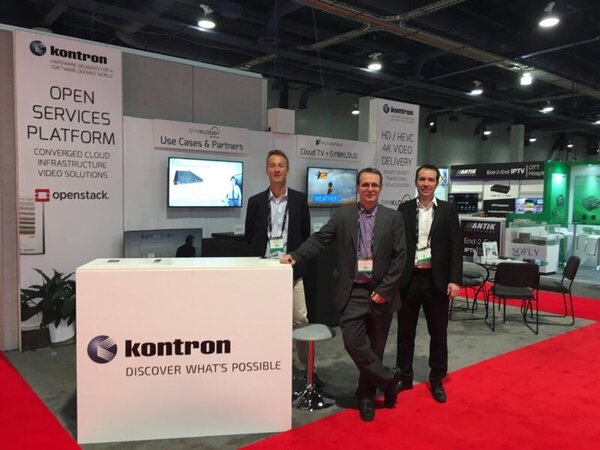
Top 3 Trends Impacting the Direction of Video
We were thrilled to exhibit again at the NAB (National Association of Broadcasters) Show in Las Vegas, the ultimate marketplace for solutions that support in new and exciting ways the creation, production, delivery and consumption of video content. It’s safe to say we got plenty of insight into the top technology trends in broadcast and a first look at new and competitive products being put on display, including OTT delivery solutions that better push the quality of experience (QoE) envelope, and new 4k 3D virtual reality cameras, just to name a couple.
Operators in the world of broadcasting and video services have varied yet distinct business models, therefore vendors need to showcase innovative solutions that can fit any type of end-customer (enterprise or service provider). Kontron responded in kind with two new hardware platforms for video delivery that now make for a complete portfolio of converged solutions that can support deployments of all sizes – in either public and/or private clouds.
In talking to current customers, and starting up conversations with potential ones, I heard much about issues that are having a significant impact on media and more specifically, the direction in which the television industry is going, as a whole.
Three major NAB Show trends I observed:
1. The transformation from SDI infrastructure to IP
Sure it’s been an ongoing trend but it’s really heating up. The television industry has embraced IP in many areas and this change is pushing broadcast engineers to get accustomed to IP technology. The move to broadcast applications using IP is cost-effective and flexible enough to comply with any media format. Hardware that can accommodate this transition is becoming the norm.
2. Satisfying customers' expectations and demands with private clouds
The goal here is to help service providers take advantage of higher density converged solutions and to better automate video delivery using cloud infrastructure. OpenStack for bare metal (Ironic) cloud provisioning and/or going the “containers” route got more traction this year.
3. Media transcoding and processing is moving to the cloud
The reason for this rapid migration is simple. Transcoding is complex and compute intensive and may directly impact the overall video viewing experience if not deployed correctly. Moving it to a (private/public) cloud network is a cost-effective, simpler way to transcode or convert live or on-demand media files with scalable infrastructure that can better automate the delivery of video workloads.
If you didn’t get the opportunity to stop by our booth, we introduced our complete hardware product portfolio of converged video delivery solutions for small, medium-sized and massive deployments.
To complement our massively scalable 2U SYMKLOUD MS2910 platform, we introduced: AP-1430, a new entry-level 1U solution for smaller-scale deployments that requires less storage, as well as the MS-1300, a compact, modular 3-node compute platform for mid-performance requirements.
People’s reactions to our SYMKLOUD platform series, built to support any of our partners’ transcoding and OTT software were very positive. This also includes the introduction of our turnkey open-source SYMKLOUD OpenStack Platform to make it easier to deliver video services across an OpenStack cloud environment. Looking forward to September to see what’s NEXT at the IBC Show. Stay tuned!


{{comment.comment}}